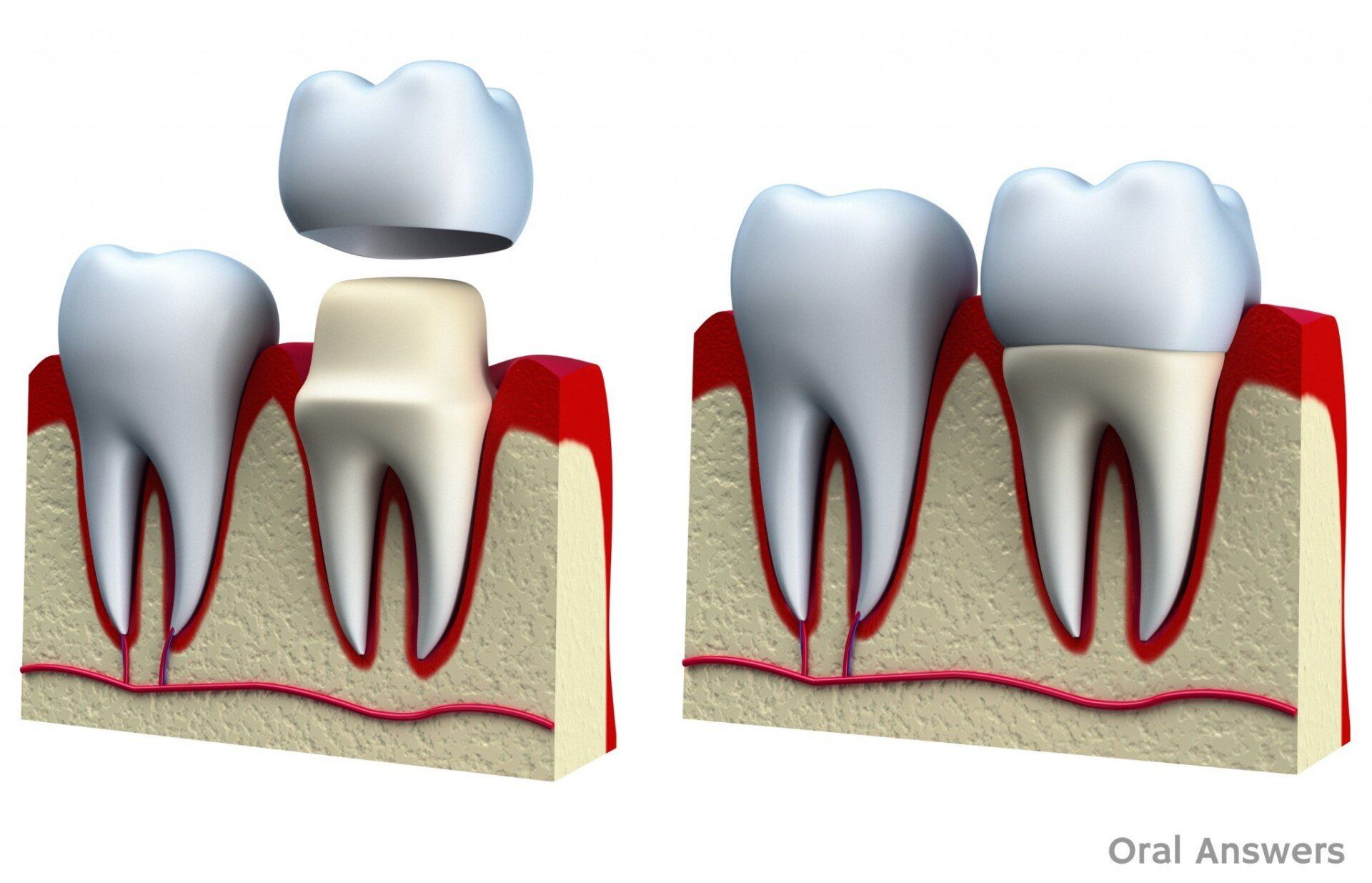What’s the Difference Between Dental Crowns and Sealants?

How familiar are you with the different treatments dentists offer? If it’s something you or a family member have experienced personally, you might be reasonably familiar. Otherwise, that might not be the case. Dental crowns and sealants both have their uses, and there’s even some overlap, but they are two very different treatments.
Purpose
To start with, the overall purpose of both dental crowns and sealants is quite similar. Both are intended to protect the teeth and reduce the risk of decay. If you take a closer look, however, you’ll start to see some differences. Dental crowns are intended to protect teeth that have already been damaged, often heavily so. Sealants, on the other hand, are applied to prevent decay from happening in areas that might be a little more difficult to get to with a toothbrush.
Typical Recipients
There are some differences between who usually gets crowns and sealants too. Anyone can get a dental crown. It’s not uncommon for children to get them to protect damaged primary teeth until the secondary teeth are ready to grow in. Plenty of adults get them too. Sealants, while not necessarily exclusive to children, are far more commonly recommended for children between the ages of 7-13 and are applied to the permanent molars as they come in.
Application Process
The application process for the two treatments is quite different. When a crown is applied, the tooth will first be filed down. In most dental offices, the dentist takes an impression of the filed tooth which is used to craft the crown so that it will be a perfect fit. This requires sending the impression to a lab. In between, you get a temporary crown on the filed tooth. When the permanent crown is ready, you have to come back to the dentist office so that the temporary one can be removed and the permanent one will be cemented in place. In our office, we use our state-of-the-art scanning and crown manufacturing to get the job done in one visit. We scan the filed tooth, and then make the crown in our own office.
The process for applying sealants is very simple by comparison. The teeth will first be cleaned and dried. An acid solution will be applied to the chewing surface. This makes it a bit rougher and easier for the sealant to bond to the teeth. They will again be rinsed and dried before the sealant is painted onto the chewing surface of the tooth. Finally, it will harden and be set by a special curing light.
Dental care is a highly personal matter. Unless you have a reason to know the ins and outs of different procedures and the reasons behind a given treatment, it’s not unusual to have some questions or be a little confused about the differences between things from time to time. Remember, you can always ask your dentist or their assistants if you have any questions or concerns about the options that are available to you for your oral care and treatment.
Clearly, dental crowns and sealants are different. But what about crowns and veneers? Click here to learn more.
The post What’s the Difference Between Dental Crowns and Sealants? appeared first on South Temple Dental.


Connect With Us on Facebook
Areas We Serve
Downtown Salt Lake City
84103, 84116, 84104, 84101, 84111, 84102, 84112, 84113, 84108, 84105, 84115, 84104, 84103
Business Hours
- Monday
- -
- Tuesday
- -
- Wednesday
- -
- Thursday
- -
- Friday
- -
- Saturday
- Closed
- Sunday
- Closed
All Rights Reserved | South Temple Dental
Dentist in Downtown Salt Lake City, Utah
